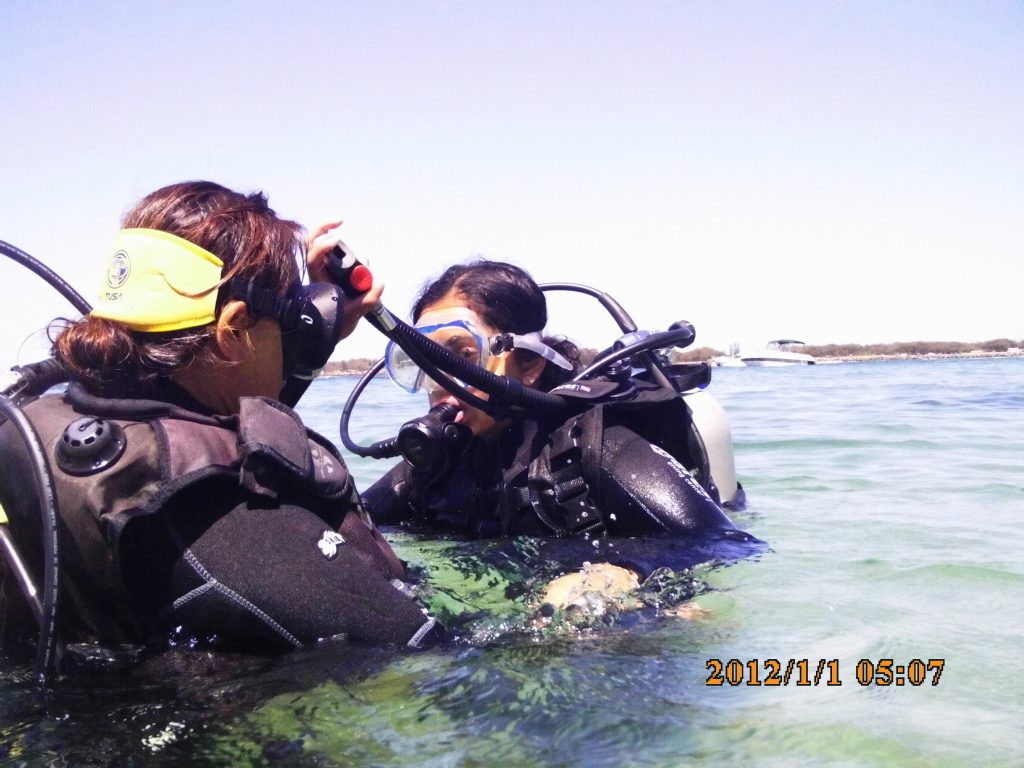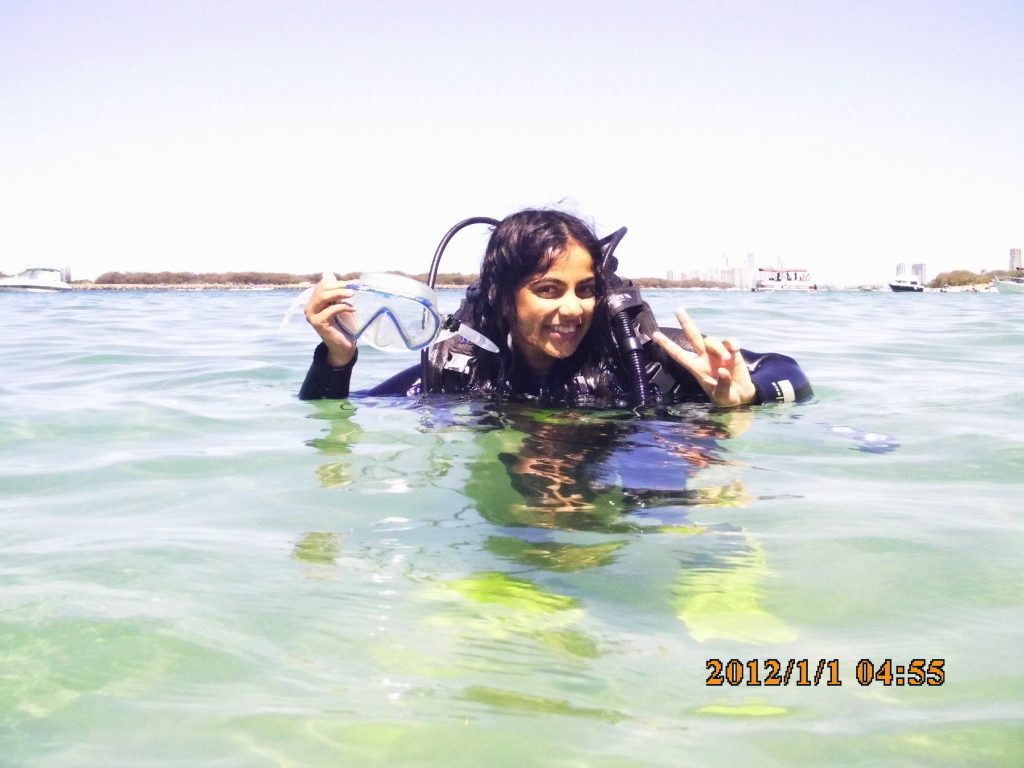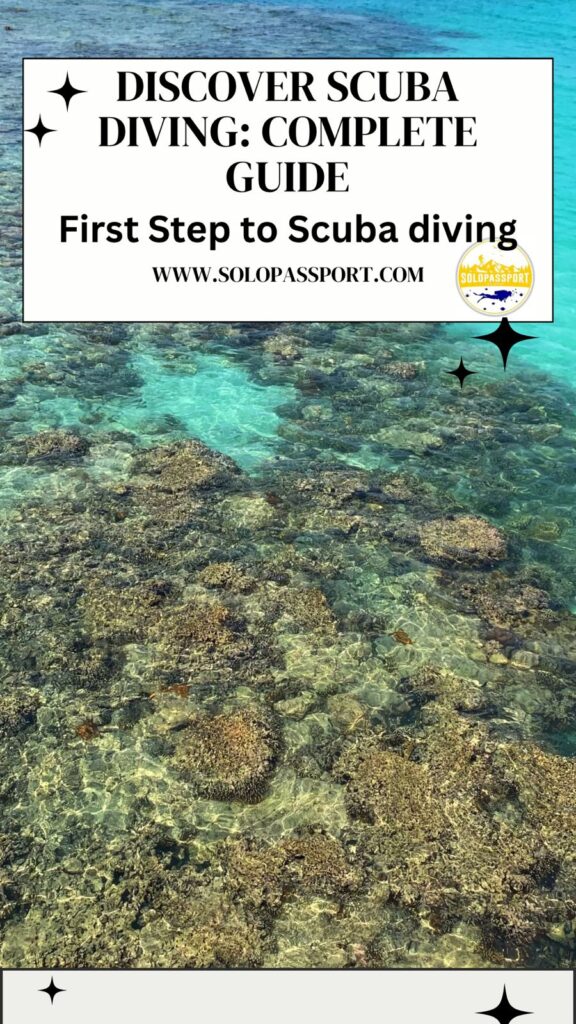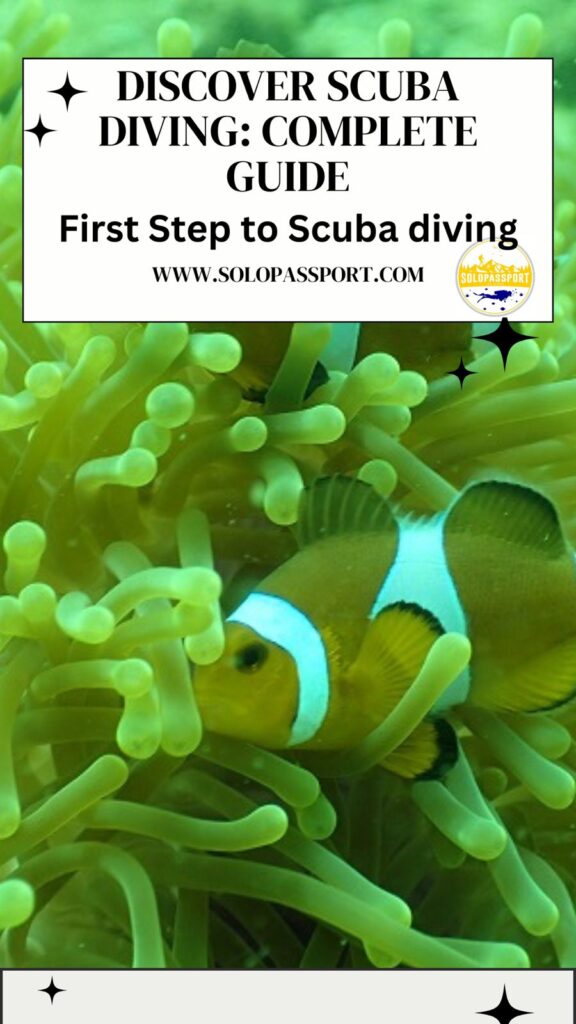First Step of Scuba Diving: Discover Scuba Diving
Discover Scuba Diving (DSD) is the perfect way to dip your toes into the thrilling world of underwater exploration. My journey began with a DSD experience, and it was a game-changer. With the guidance of experienced instructors, I learned essential skills in a controlled environment, allowing me to build confidence before plunging into the ocean’s depths.
The excitement of breathing underwater for the first time near Netrani Island was unforgettable. I vividly remember the moment I realised that a new world awaited beneath the waves. DSD is designed for anyone curious about scuba diving, whether you’re a complete novice or just looking to enhance your skills.
Through a combination of theory and practical training, participants explore vibrant marine life and breathtaking underwater landscapes under the instructor’s watchful eye.
If you’re contemplating whether diving is for you, I highly recommend trying DSD. It’s not just an introduction to diving; it’s an invitation to discover the beauty and serenity of the underwater realm.
This article may contain affiliate links, meaning if you decide to purchase via my links, I may earn a commission at no additional cost to you. For complete information, please see our affiliate disclaimer here.
Page Contents
What is Discover Scuba Diving?
Discover Scuba Diving (DSD) is a beginner program designed for those who want to try scuba diving without committing to a full certification course. Offered by organisations like the Professional Association of Diving Instructors (PADI), Scuba Schools International (SSI), and the National Association of Underwater Instructors (NAUI), this experience is known by different names across agencies. For instance, PADI calls it “Discover Scuba Diving,” SSI refers to it as “Try Scuba,” and NAUI offers it as “Introductory Scuba Diving.”
DSD involves a short theory session, during which participants learn essential concepts like equalising pressure, hand signals, and basic underwater breathing techniques. Afterwards, participants undergo shallow water training, often in a swimming pool or calm ocean water, where an instructor teaches basic skills like clearing the mask and retrieving the regulator.
This experience includes a guided dive, usually limited to a maximum depth of 12 metres (40 feet), under close supervision from a certified instructor. DSD is ideal for people curious about diving but not ready to commit to the time and financial requirements of certification courses. It allows participants to experience the underwater world, evaluate their comfort levels, and decide whether to pursue a full certification, such as Open Water Diver, later.

DSD offers an exciting glimpse into scuba diving while ensuring safety and ease for beginners. It provides a foundation for those interested in exploring the ocean further and is a great way to experience marine life up close.
5 Reasons To Take Up Discover Scuba Diving (DSD) Before Any Certification Course
#1 Evaluate Comfort and Passion Underwater
Trying Discover Scuba Diving multiple times before certification helped me understand how I felt underwater, whether it was truly exciting or just a passing curiosity. Breathing underwater and handling equipment are skills that take time to become comfortable with, and for beginners, the experience can feel strange. This is where DSD’s flexibility helps—you can evaluate whether you enjoy being underwater before fully committing.
Being completely submerged and reliant on a breathing apparatus can be daunting for those new to scuba. However, DSD sessions allowed me to focus on getting comfortable one step at a time. By doing close to 15 DSDs, I got a feel for diving in different conditions and depths, learning to relax with the equipment and techniques without the additional pressure that a certification course might add.
If you find comfort and joy in these initial experiences, it’s a good sign you’ll enjoy diving long-term, but if not, you have only committed to a single experience rather than an entire course.

#2 Avoid Wasted Investment
Certification courses require considerable investment in both time and money. Committing to a course without fully understanding if scuba diving is right for you could lead to frustration or disappointment if you realise you aren’t as interested as you thought.
By starting with DSD, you can experience what it’s like to be a diver without immediately signing up for multiple training days and a more substantial financial commitment. DSD is a smart way to confirm that your interest is genuine and not driven by temporary excitement.
In my case, I wanted to be certain that I loved the experience enough to commit financially to the certification process. Many divers start certification only to feel out of place or uncomfortable as the course progresses. Without the foundation of DSD, the money and time invested could feel wasted, as certification doesn’t guarantee comfort in the water. DSD helps avoid regrets and allows you to enjoy the experience, keeping certification for when you’re truly ready.
#3 Learn Gradually with Hands-on Guidance
One of the best parts about Discover Scuba Diving is the hands-on, personalised guidance from an instructor who helps you through each stage. Instead of rushing to complete skills for certification, you get to focus on the basics, like equalising pressure, clearing the mask, and basic buoyancy control.
DSD encourages gradual learning, essential in my journey to becoming a more confident diver. This approach allowed me to learn at my own pace, moving step-by-step in an environment where I could ask questions, get extra help, and feel genuinely supported.
Eventually, I was much better prepared when I eventually committed to the certification, making the course less overwhelming and more enjoyable. Thanks to my experience from the DSD sessions, I could focus on improving my skills instead of struggling to keep up. Diving can initially feel complex, so starting with DSD allows you to build skills gradually, making the certification process smoother and more fulfilling when right.

#4 Less Pressure, More Enjoyment
Discover Scuba Diving is designed purely for enjoyment and exploration, unlike a certification course with specific skills and tests. This lack of pressure lets you focus on appreciating the experience rather than worrying about passing exams.
DSD is a chance to have fun, relax, and enjoy what you see without added stress. Those new to diving quickly feel overwhelmed by the gear, techniques and focus needed to meet certification standards. DSD, however, strips away these concerns, letting you dive at a depth you’re comfortable with and observe the underwater world with minimal demands.

I loved having this freedom; the enjoyment and pure curiosity helped solidify my interest in diving, making the transition to certification a natural step forward. Without the intense expectations, DSD lets you explore at your own pace, experience a sense of accomplishment, and see if you’ll enjoy diving repeatedly.
#5 Build Diving Skills and Passion Over Time
Diving became a personal journey for me, largely because I gradually allowed myself the time and space to develop my skills and passion. I’m now a Rescue Diver with around 95 dives under my belt, and looking back, I can say that DSD was the perfect way to begin my journey.
Each DSD dive allowed me to understand the basics better and practice skills that ultimately prepared me for more advanced diving. As I slowly transitioned from DSD to certification, I felt confident that I was ready to move forward, unlike some who may rush into certification without feeling entirely prepared.
Building skills over time has helped me enjoy each diving stage rather than feeling overwhelmed or unprepared. It’s now a passion I pursue actively, always learning and improving with each dive. For those truly interested in becoming skilled divers, DSD is a fantastic first step, letting you gradually grow into the sport and see if it’s a journey you want to continue long-term.
Discover Scuba Diving (DSD) Program
Requirements for DSD
Discover Scuba Diving (DSD) requirements are straightforward, as this program is designed for beginners and doesn’t require prior diving experience. Here’s what’s typically required:
1. Age Requirement
- PADI: Participants must be at least 10 years old.
- SSI: The minimum age is also generally 10 years old.
2. Basic Health Condition
- Participants must be in reasonable health, without major respiratory, heart, or ear conditions. Most dive shops will require you to complete a basic medical questionnaire to check if any conditions could affect your ability to dive.
- If the medical form contains a “yes” answer, you may need a doctor’s approval before participating in DSD.
3. Swimming Ability
- Unlike certification courses, DSD does not usually require knowing how to swim. However, basic comfort in water is helpful.
- Instructors will guide you closely, typically keeping to shallow depths and calm waters, making it accessible even for non-swimmers.
What Does The DSD Program Include?
eLearning
Many scuba diving agencies, such as PADI, now include an optional eLearning module as part of the Discover Scuba Diving (DSD) experience. This module is specifically designed to cover the fundamentals of scuba diving theory. Participants learn about essential concepts like underwater pressure, proper breathing techniques, and the importance of equalisation.
The eLearning module is structured to be quick and engaging, usually taking less than an hour to complete. This format allows participants to study at their own pace before diving, ensuring they grasp the basics and feel more prepared when entering the water. The flexibility of the eLearning component caters to individuals with varied learning styles, making it accessible for everyone, regardless of their prior knowledge.
This module is a solid foundation for further study for those who find diving rewarding and pursue certification. It significantly eases the learning curve for more advanced courses, such as the Open Water Diver certification. By completing the eLearning module, participants can confidently dive into certification training equipped with the fundamental knowledge needed to succeed.
Basic Skill and Pool Sessions from Instructor
Discover Scuba Diving (DSD) program instructors provide essential skill demonstrations and practice sessions in shallow water. This training typically occurs in a pool or a calm, shallow ocean area, making it the perfect environment for beginners. Participants learn crucial skills, such as clearing the mask, which involves removing water that may enter the mask while diving. This skill helps divers maintain clear visibility underwater.
Instructors also teach participants how to recover their regulator, the device used to supply air while diving. Learning this skill is vital for ensuring that divers can regain their air supply quickly if it becomes dislodged. Additionally, participants practice equalising ear pressure, an important technique that helps prevent discomfort or injury while descending.
These practice sessions are designed to build confidence and comfort in the water. They allow participants to focus on mastering fundamental skills without the pressure of a full certification course. The supportive environment encourages beginners to ask questions and receive personalised guidance from instructors. By the end of this training, participants feel more at ease and prepared for their guided dive, equipped with the necessary skills to enjoy their underwater experience safely.
Diving in the Ocean
After completing the introductory training, participants are ready to venture on a guided dive, typically at a depth of up to 12 metres (40 feet). This experience provides a unique opportunity to explore the underwater environment under close supervision. Instructors are present to ensure safety while helping participants gain confidence as they transition from training to actual diving.
During this guided dive, participants can observe various marine life, such as colourful fish, coral formations, and other underwater wonders. This firsthand exposure to the ocean’s beauty can be awe-inspiring and often acts as a highlight of the DSD program. Participants also have the chance to practice the skills they learned during training in real diving conditions, reinforcing their understanding of essential techniques while enjoying the underwater scenery.

It’s important to note that while participants receive an e-certificate upon completing the DSD program, this certification does not grant them the same privileges as fully certified divers, such as those with an Open Water Diver certification and above. DSD participants are not authorised to dive independently. They must always dive with a certified instructor or dive professional. This distinction is vital for ensuring safety and proper training in the scuba diving community.
Frequently Asked Questions for DSD
Q: What does DSD include?
The DSD program includes an introduction to scuba diving theory through a brief eLearning module. Participants learn about underwater pressure, breathing techniques, and equalisation.
It also features hands-on training in shallow water, where instructors demonstrate essential skills like clearing the mask and recovering the regulator.
Participants then embark on a guided dive, typically up to 12 metres (40 feet), allowing them to explore the underwater environment and observe marine life under close supervision. This experience fosters confidence and provides a foundation for those pursuing further scuba diving certifications.
Q: Do I need to know how to swim for DSD?
You do not need to know how to swim to participate in the DSD program. While having basic comfort in water is beneficial, the program is designed for beginners and those new to diving.
Instructors provide close supervision, typically training in shallow waters, such as pools or calm ocean areas. This controlled environment allows participants to focus on learning essential skills without the pressure of swimming proficiency. However, being comfortable in the water can enhance the experience, so it’s helpful if participants have a basic understanding of floating and moving.
Q: How many metres can I go underwater for DSD?
In the DSD program, participants can typically dive to a maximum depth of 12 meters (40 feet). This depth is considered safe for beginners and allows them to experience the underwater environment under the close supervision of certified instructors. It’s important to note that this limit is set to ensure the safety of participants who may be new to diving.
If you wish to dive deeper in the future, completing a full certification course, such as the Open Water Diver course, will enable you to explore greater depths independently.
Q: Will I get a certification for DSD?
Yes, participants in the DSD program receive a certificate upon completion. However, it’s important to understand that this certificate does not equate to a full scuba diving certification. The DSD certificate indicates that you have completed an introductory experience and learned basic skills and knowledge of scuba diving.
Q: Can I dive independently after my DSD program?
Despite earning this certificate, you are not authorised to dive independently. DSD participants must always dive under the supervision of a certified instructor or dive professional. If you wish to dive independently in the future, you must pursue a full certification, such as the Open Water Diver course.
Q: What is my next step after DSD if I want to do certifications?
After completing the Discover Scuba Diving (DSD) program, your next step toward obtaining a full scuba diving certification would typically be to enrol in an Open Water Diver course. Here’s a breakdown of the steps you might take:
- Enroll in an Open Water Diver Course: This certification course is designed for beginners and covers more in-depth theory and practical skills. You’ll learn about diving safety, equipment use, and dive planning.
- Complete the eLearning Module: Many agencies, like PADI and SSI, offer an online learning component. This module covers essential concepts, allowing you to study at your own pace before the practical sessions.
- Attend Classroom and Pool Sessions: You’ll participate in classroom discussions and practice sessions in a controlled environment, such as a pool, where you’ll learn and refine your skills.
- Go on Open Water Dives: After completing the theory and pool training, you’ll undertake a series of open water dives, typically with an instructor. You’ll demonstrate your skills and gain practical experience in real diving conditions.
- Obtain Your Certification: After completing the course requirements, including the open-water dives, you’ll receive your Open-Water Diver certification, which allows you to dive independently within the limits of your certification.
Q: Which one should I pick for the certifications, PADI, SSI or NAUI?
Choosing between PADI, SSI, and NAUI for your scuba diving certification depends on various factors. Here’s a brief overview of each agency to help you decide:
PADI (Professional Association of Diving Instructors)
- Popularity: PADI is the largest and most recognised diving organisation worldwide. Its certifications are widely accepted, making it easier to find dive shops and instructors globally. I am a PADI-certified Rescue diver.
- Course Structure: PADI offers structured courses with a clear progression from beginner to advanced levels. Their online eLearning platform is user-friendly and accessible.
- Flexibility: PADI provides a range of specialty courses, allowing divers to tailor their training to specific interests.
SSI (Scuba Schools International)
- Reputation: SSI is well-regarded, especially in Europe and the Caribbean. Their courses focus on the same fundamental skills as PADI.
- Comprehensive Training: SSI emphasises water skills and theory, and due to smaller class sizes, it often provides more personalised instruction.
- eLearning: SSI also offers a user-friendly digital learning platform that integrates well with its practical sessions.
NAUI (National Association of Underwater Instructors)
- Emphasis on Education: NAUI strongly focuses on diver education and safety. Their courses often encourage a deeper understanding of dive theory.
- Flexibility in Training: NAUI is known for its more flexible approach to training, which can benefit divers who prefer a less structured format.
- Less Common: While respected, NAUI is not as widely recognised as PADI, which may limit access to some dive shops and locations.
Considerations for Your Choice
- Location: Check which agencies have more training centres and instructors in your area or where you plan to dive.
- Course Content: Review the course outlines and see which agency’s teaching style resonates with you.
- Personal Preference: If possible, talk to divers certified through these agencies to get their insights.
Ultimately, all three organisations offer quality training, so it comes down to your preferences, the availability of courses in your area, and where you plan to dive.
Closing Notes
Discover Scuba Diving is more than just an introduction; it’s an invitation to experience the ocean’s wonders in a new way. Reflecting on my journey, I can honestly say that the thrill of breathing underwater and exploring vibrant marine life was nothing short of magical.
DSD is the perfect first step. So why wait? If you’ve ever felt curious about scuba diving, I encourage you to take that leap. Sign up for a Discover Scuba Diving program today, and who knows? You might find a new passion that will lead you on incredible underwater adventures. Dive in, and let the ocean unveil its treasures to you!
How can you support me?
You know how much I love coffee, so you can buy me a coffee – Buy me Coffee!
If you liked this article and if it was helpful in your planning or travelling, do share, tweet, or pin this post.
Follow me on Instagram | Facebook | YouTube | Twitter | LinkedIn
PIN for later reference – Discover Scuba Diving (DSD)



